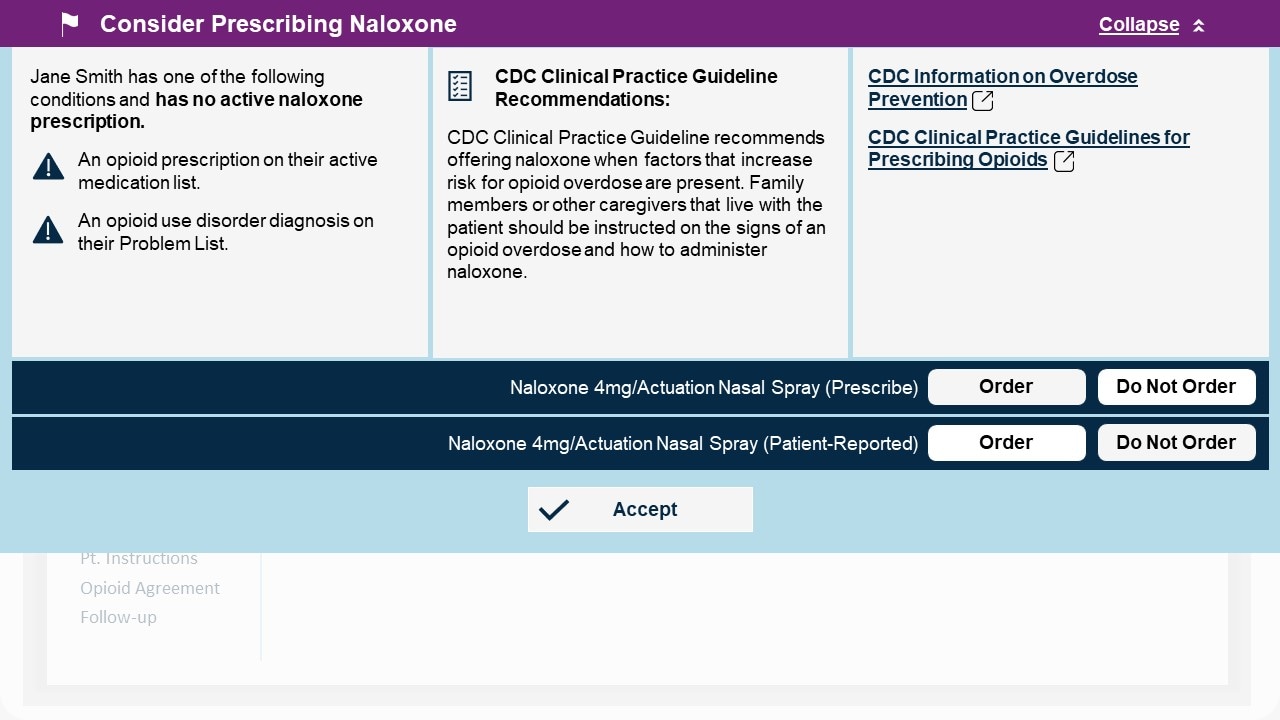Clinicians

These CDS tools are supported by most major EHR vendors. Talk to your leadership team about incorporating these tools into your health system. For more information, please review the Office of the National Coordinator for Health Information Technology (ONC)/CDC Health Information Technology: Integration Framework.
Clinicians play an essential role in managing patients who are living with chronic pain. Using CDC’s Opioid Prescribing Electronic CDS tools can help inform clinicians’ decision-making by assessing when it is appropriate to initiate opioid use for the treatment of chronic pain and how to safely maintain or discontinue use in patients who are currently on long-term opioid therapy.
These tools provide built-in support and can deliver more efficient, more effective, and safer care within the patient encounter.
In the Clinical Setting
As the patient’s information is entered into the EHR, the CDS tools automatically review it, and, if certain patient-specific characteristics match criteria for one of the 2016 CDC Guideline recommendations, a prompt will appear and offer support, guidance, and options for care and management. For example, if the patient’s history shows a current benzodiazepine prescription and a clinician is about to write a prescription for opioids, a prompt will appear reminding the clinician to avoid prescribing opioid pain medication and benzodiazepines concurrently. This prompt corresponds with 2016 CDC Guideline Recommendation 11: “Clinicians should avoid prescribing opioid pain medication and benzodiazepines concurrently whenever possible.”
“Ease of use of PDMP and pathways has been beneficial for busy clinicians.”
While these CDS prompts can be passive, they can deliver support and displays to enhance traditional EHR CDS systems. Examples of this support include:
- Condensing and simplifying patient history into a single view so that clinicians can easily see a patient’s past prescription history just by hovering on the screen.
- Promoting discussion with patients regarding the effectiveness of existing treatments.
- Recommending consultations with pain management experts.
- Providing prescription order support, including morphine milligram equivalents (MME) calculations.
- Offering one-click access to prescription drug monitoring programs (PDMPs).
- Prompting clinicians to prescribe naloxone.
- Encouraging the use of controlled substance agreements.
Using these tools can reduce the risk of medication errors and adverse events.

“Interruptive CDS that surfaces key data points from a patient’s chart to the clinician’s view at the time of prescribing an opioid has been very effective.”
